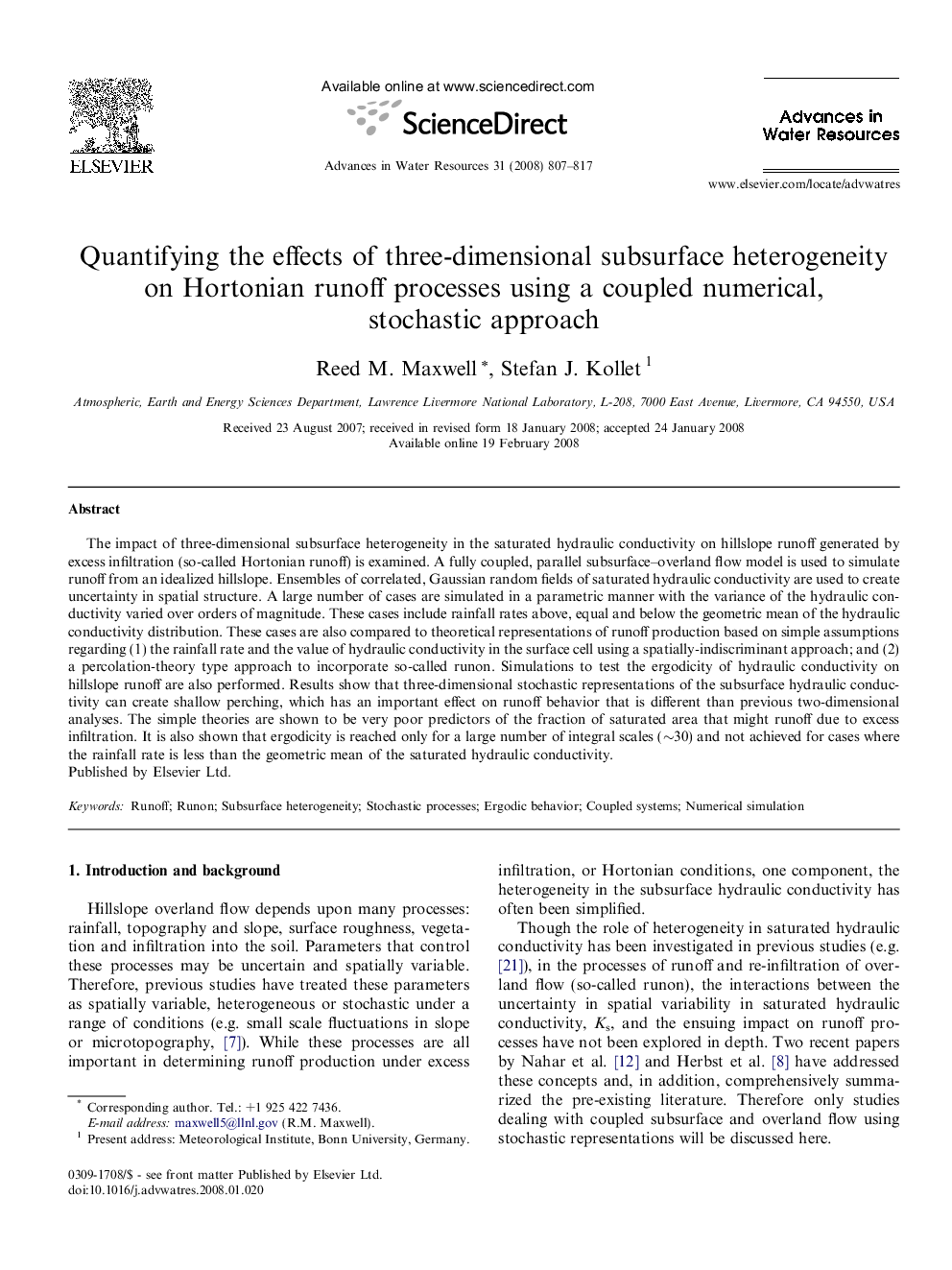| Article ID | Journal | Published Year | Pages | File Type |
|---|---|---|---|---|
| 4526372 | Advances in Water Resources | 2008 | 11 Pages |
Abstract
The impact of three-dimensional subsurface heterogeneity in the saturated hydraulic conductivity on hillslope runoff generated by excess infiltration (so-called Hortonian runoff) is examined. A fully coupled, parallel subsurface-overland flow model is used to simulate runoff from an idealized hillslope. Ensembles of correlated, Gaussian random fields of saturated hydraulic conductivity are used to create uncertainty in spatial structure. A large number of cases are simulated in a parametric manner with the variance of the hydraulic conductivity varied over orders of magnitude. These cases include rainfall rates above, equal and below the geometric mean of the hydraulic conductivity distribution. These cases are also compared to theoretical representations of runoff production based on simple assumptions regarding (1) the rainfall rate and the value of hydraulic conductivity in the surface cell using a spatially-indiscriminant approach; and (2) a percolation-theory type approach to incorporate so-called runon. Simulations to test the ergodicity of hydraulic conductivity on hillslope runoff are also performed. Results show that three-dimensional stochastic representations of the subsurface hydraulic conductivity can create shallow perching, which has an important effect on runoff behavior that is different than previous two-dimensional analyses. The simple theories are shown to be very poor predictors of the fraction of saturated area that might runoff due to excess infiltration. It is also shown that ergodicity is reached only for a large number of integral scales (â¼30) and not achieved for cases where the rainfall rate is less than the geometric mean of the saturated hydraulic conductivity.
Related Topics
Physical Sciences and Engineering
Earth and Planetary Sciences
Earth-Surface Processes
Authors
Reed M. Maxwell, Stefan J. Kollet,
